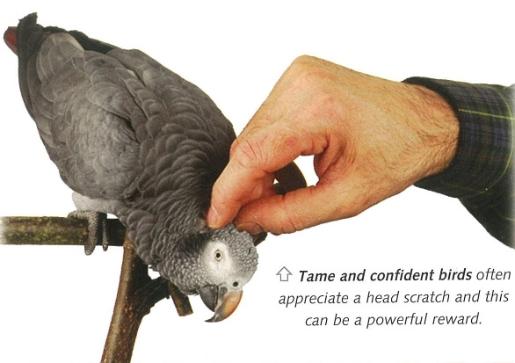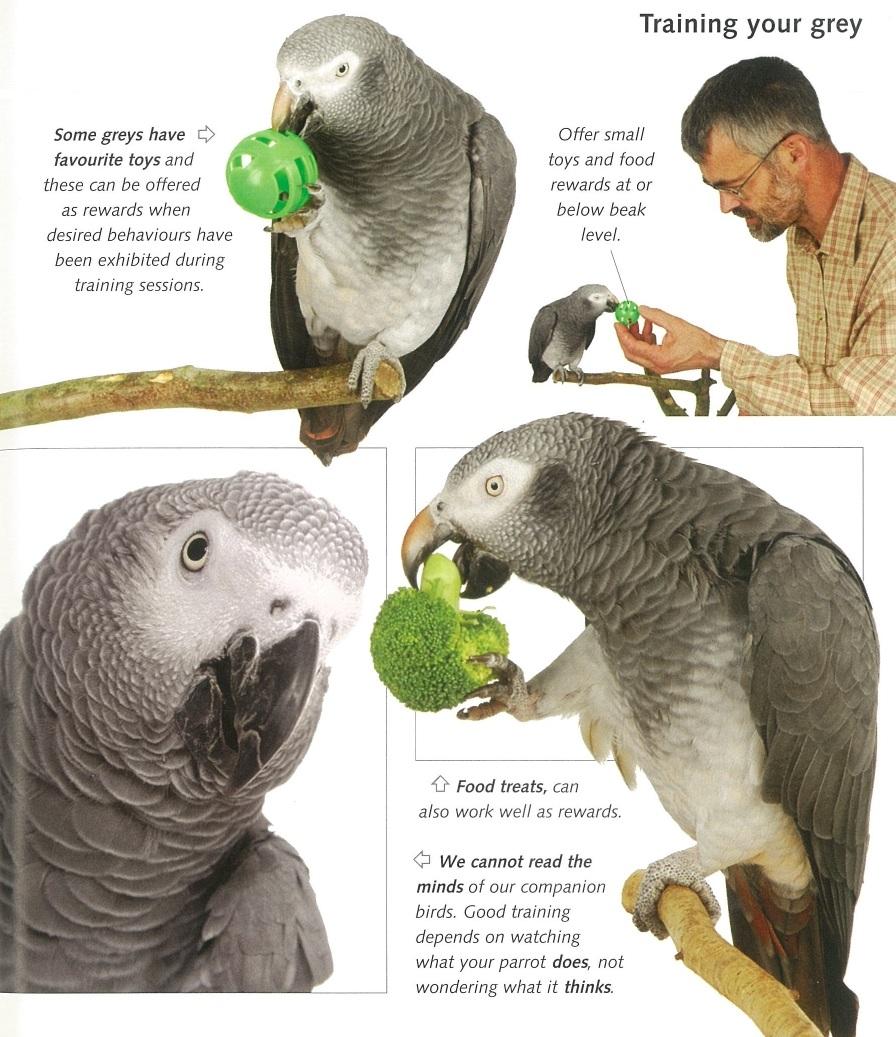The main reasons for teaching your bird to accept a few training requests from you are much the same as those for training any animal you will be living with - you need to have good communication with your bird if it is to share your home as a companion animal. A trained grey who accepts a few simple requests from you makes a far better companion than a confused, untrained bird, who may either be nervous of people or aggressive towards them. Before you make a start on training, however, it is best to understand the motivation that lies behind behaviour in general.
All behaviours are done for a good reason
The behaviours of any animal are always done for a reason. The reason is, essentially, that the animal knows it will get some benefit from performing the behaviour. Birds will drink when thirsty and eat when hungry. They will tidy up their feathers by preening until they feel more comfortable. If something frightens a bird, it will try to fly away, when it likes something it will try to move towards it. In essence, your bird will perform a behaviour because it desires the results of that behaviour.Using rewards
This awareness gives us an insight into how to work with a bird and teach it new behaviours. The key to success is ensuring that you, as your bird's carer, always provide your bird with a reward for the behaviours you would like your bird to carry out. The reward is specific to your bird and can be anything which you know your bird already really likes - perhaps a small food treat, or having his head scratched, or a favourite toy to play with, or being taken to a favourite place on which to perch. This use of reward-based training is at the heart of a proper understanding of your bird's behaviour. The study of behaviour is called applied behaviour analysis (ABA) and the use of methods based on ABA ensures a sympathetic co-operative method in working with your bird. ABA concentrates on observable behaviours; what your bird actually does and how frequently he does these things. While parrots will certainly have their own thoughts and feelings, ABA does not delve into this, since thoughts and feelings cannot be seen or measured in terms of their frequency or intensity.
